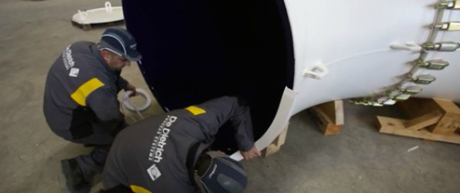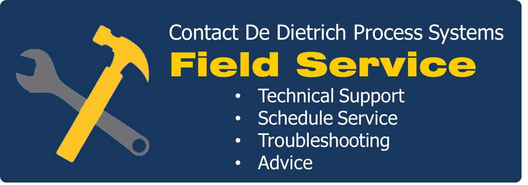What's the Best, Most Cost-Effective Service Option for your Equipment?

Companies are constantly faced with budgets cuts and figuring out more cost-effective ways to operate. In searching for new ways to spend less, it’s helpful to analyze all aspects of your equipment expenses throughout their lifecycles, from procurement to maintenance and repair. You might find that there are a number of protocols that are in place not because they make the most economical sense but because that’s how they’ve always been done.
In the title of this post we mention the “best” and “most cost-effective” options. It’s important to realize that sometimes the best choice isn’t always the most cost-effective, but knowing your options will help you select what’s right for you.
By investing some extra time and effort into managing your equipment service procedures you can effectively and efficiently minimize your expenditures for maintenance and repair. By looking at the repair history of a system you can get a clear picture as to what services the equipment has undergone in the past and their associated costs. However, the very first step is to review the manufacturer’s warranty. If it comes with any equipment service contracts review them to see exactly what is covered. There is no sense in using your company's time and labor or paying for field service when the service is contractually covered!
Once the initial service coverage, if any, has been assessed, plant managers of CPI equipment generally choose from one of the following three options:
- Utilize in-house personnel (DIY)
- Work with original equipment manufacturers (OEMs)
- Hire third-party help via independent service organizations (ISOs)
Each of these present their own pros and cons given the different conditions in which they might be needed. Looking at these key factors of your service requirements and the choices available will help you to identify what is the most cost-effective option.
In-House (DIY) Service
Do-it-yourself repair is almost always the most cost-effective way to maintain your equipment. It’s timely too, as staff is on hand and at your disposal to minimize downtime in production. But unfortunately the famous saying, “If you want something done right, do it yourself,” doesn’t always apply, especially when you are talking about servicing your own process equipment.
With respect to in-house repair, you really have to consider the levels of expertise and compensation of your staff. Are they qualified to perform the service/make the repair? Often, DIY service is not even an option due to lack of expertise. Secondly, if they are a highly compensated employee and all of their time is being spent on another important task, it might not be worth the labor expenditure to have them postpone what they are working on to complete the job. And should issues arise after the repair has been made, it’s your responsibility. Still, there is some value to having the capability to handle service yourself and for minor, regularly scheduled tasks, if you have an aptly qualified technician who can satisfactorily perform the work then it’s definitely an option worth pursuing under the right circumstances.
Original Equipment Manufacturers (OEMs)
You don’t have to do too much background checking on an OEM. As the equipment manufacturer, you aren’t going to find anyone else out there who has more expertise on the equipment. After all, these are the folks who designed, engineered, built and installed it for you. It’s comforting in a sense to work with a staff that you know will be reliable when it comes to equipment knowledge and protocols to follow.
Another advantage when you are working with the manufacturer who built your system is that they have all of your project details on file. By simply providing them with the project/equipment/system identification number, they will be able to look up the details of your system and have all the information readily available. This can save a lot of time and hassle in getting your service technician up to speed with your equipment history.
OEMs typically have the most up-to-date training as well. In fact, if you’ve purchased the latest model or are utilizing a new, cutting-edge technology chances are only the manufacturer will be competent to perform service/maintenance on it. And when it comes to software issues, it is usually a proprietary product that only the manufacturer can troubleshoot and fix.
There is a price, however, for premium service and expertise. OEM costs can run higher than other types of service providers, in some cases by as much as 20%. There are usually flat contract prices and hourly rate payment options so getting a full understanding about how you will be charged and what you will be charged for will help you to manage your expenses.
Third-Party / Independent Service Organizations (ISOs)
If your service requirements are well above the expertise of your in-house technicians, the other option besides OEMs are third-party organizations. Independent service organizations, or ISOs, might be the most cost-effective external help as they often price themselves competitively against OEM rates. Many ISO employees formerly worked for an OEM so there’s a chance they have a good understanding of the equipment. Because they need to know how to service across multiple brands, they usually have extensive training across a broad array of systems. If you shop with multiple vendors and have more than one piece of equipment, calling three or more OEMs to schedule service might be a bit of a hassle for you. In this instance an ISO, who works on equipment from a variety of manufacturers, can be beneficial.
There is also a “price to pay” when it comes to finding a sufficient third-party and that’s time. It can be a challenge to find one that best suits all of your needs. Before you make any decisions you need to make sure you know their service capabilities. It takes extra work to research and find the right one, time that you might not have. If your objective is to minimize your downtime and you’re willing to pay for the convenience, an OEM service contract is what you are looking for.
Additional disadvantages to ISOs are their limited access to OEM software, scheduling availability (depending on the size of the company), and lack of training on the newest technologies to hit the market (if applicable to your equipment).
So which is the best choice?
As with most business decisions, there is no clear cut winner. If you want the best, fastest service and the quality assurance that you can only get from the manufacturer, an OEM is probably the way to go. If you are searching for more competitive pricing, have a variety of equipment from multiple vendors, and have the time to perform your due diligence to select the right partner, then a third party is a good consideration. And if you have a stellar maintenance/repair crew who can handle a number of service regimes in-house then that might be the go-to option.
If cost savings is your number one goal, above any other cons that might come along with it, an independent service organization might be a good fit for you. But unlike OEMs who are pre-qualified to service their equipment, there are some questions you’ll need to ask an ISO before you commit to using them, such as:
- Do they perform services according to OEM guidelines?
- Do they employ OEM-trained service technicians?
- What is the average repair time for the type of service you require?
- Do they stock standard replacement parts for quicker turnaround?
- Do they come to your facility to perform repairs or does your equipment need to be shipped to their facility?
- How do they structure their pricing? (flat rates for PM, hourly rates, any additional charges?)
- Do they have the proper insurance? Do they take on liability of equipment that is sent to them?
ISOs usually maintain an inventory of parts and can be less expensive than new parts purchased direct from OEMs. Still, many people feel it’s worth the extra money to have the assurance of purchasing direct from the manufacturer to ensure superior quality. If you are dealing with an ISO, ask about their parts on hand - they often include warranties to give you some piece of mind if you do happen to have any issues with them.
If you were on the fence as to which service option to choose before reading this, we’ve hopefully clarified a few points to make the decision process a little easier for you. Chances are if you’ve been selective enough to purchase a high-quality piece of equipment, you’ll want to ensure that it receives a matching high-quality level of service. De Dietrich Process Systems has technical service specialists throughout North America that are continuously trained in the most advanced technology available for the repair and maintenance of your equipment, complying with all applicable OSHA and National Board regulations. From onsite inspection and repair to preventative maintenance programs, you’ll find a service option available to meet your needs and your budget.
